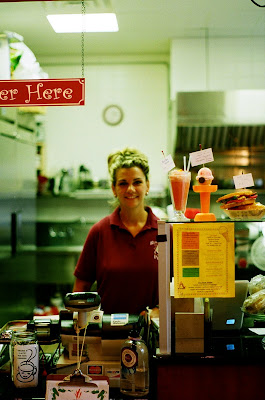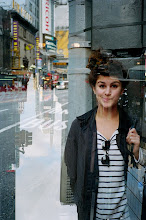
Thursday 21 Oct 2010
Aleks Krotoski is the British Library’s Researcher in Residence for the newly opened exhibition, Growing Knowledge.
A respected digital media commentator and presenter of the BBC’s Virtual Revolution, Aleks has brought her experience and knowledge of technology to the Library, helping the exhibition pose the right questions to the research community.
Internal Communications assistant, Evie Jeffreys, met up with Aleks to discuss the novel role of Researcher in Residence and her thoughts on Growing Knowledge.
How did you get involved with the exhibition?
I have stalked the British Library for a long time – I always found it a place of solace during my PhD. So when I was approached for my thoughts on the future of digital research I jumped at the chance to be involved.
I was already looking at how the web interacts with social sciences but was keenly aware of issues we hadn’t thought about when it came to technology and research.
What does the role of Researcher in Residence entail?
I worked closely with Matthew Shaw, the lead curator of the exhibition, and Clive Izard, Project Director, to identify which tools we can showcase in the exhibition and with UCL and JISC to evaluate the tools. I also worked to establish the event schedule – compiling panel discussions and workshops.
I did a lot of thinking and writing with Times Higher - we are constantly asking the question ‘is this relevant to researchers?’ It’s really important to get an understanding of what is useful to the people potentially using the tools.
How do you think the exhibition will contribute to the research community in general?
Just having access to the tools in the exhibition is exciting. They will provoke new research questions and hands-on collaborative work. We want to inspire discussion and debate.
However, the exhibition is not just informing the research community, but wants to know the researchers’ opinions and needs.
It will keep evolving and internal reports in January and March will give us feedback on how the research community feels about new research tools and methods.
On a more personal level, when and how did you become interested in technology?
As a child I had an IBM PC and my mother was adamant that I start using it to prepare me for whatever technology and tools were to come.
I found the whole concept of self-publishing fascinating.
I developed an ability to use technology and as I evolved professionally I took for granted that I was not scared of it and wanted to work with it and learn more.
Last week’s launch of Growing Knowledge, kicked off by speeches from Aleks, Lynne Brindley and Andrew Miller MP, was a great success.
You can watch a YouTube video of Aleks, among others, speaking about Growing Knowledge here.






















